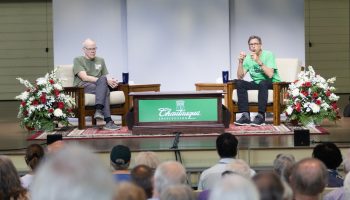
One in eight bird species is threatened with extinction, according to BirdLife International’s 2018 report, “The State of the World’s Birds.”
The situation is dire. Conservation resources are limited, and the debate among biologists has turned to which species should be prioritized, said Bridget Stutchbury, a professor of biology at York University in Toronto.
Some have focused on deciding which species to save, while Stutchbury and others argue that all bird species could be saved if there was enough funding for the effort.
“A group of biologists said we shouldn’t be doing emergency room triage, we should be doing battlefield triage,” she said. “This had triggered a huge controversy in conservation. Some people, like myself, say we could save those species if we wanted to.”
Stutchbury will give a talk at 12:15 p.m. today in Smith Wilkes Hall, titled “Birds in Decline: Is It Time for Conservation Triage?” as part of the Bird, Tree & Garden Club Brown Bag lecture series.
Stutchbury is writing a book on this topic and has already authored Silence of the Songbirds, The Private Lives of Birds and Bird Detective: Investigating The Secret Lives of Birds.
In addition to working as a professor at York University, Stutchbury is on the board of Wildlife Preservation Canada.
Since the 1980s, Stutchbury has studied the behavior, migration and conservation of migratory songbirds.
“Now most of my work is on bird conservation,” she said. “Over the years, the environmental problem has become worse and worse. It became hard for me to spend money answering fun questions when the birds I’m studying are disappearing.”
Biologists and conservationists have the techniques and tools to save most bird species, but they do not have sufficient funding to do so, she said.
To decide which species to save, biologists consider their ecological roles, as well as how unique the species is.
“If you want to save biodiversity, those species that are very unique and don’t have very many close relatives should be saved because there’s nothing else like them on the planet,” she said.
Biologists also consider how much a species will be helped by money spent toward its conservation. Stutchbury said plants and insects are easier and cheaper to save.
Many bird species are threatened by habitat loss and invasive species that compete for food, nests and other resources.
Stutchbury said climate change has not had as much of an effect on birds as it has on some other animals. Since birds are mobile, they can move around to different areas that suit their habitat preferences as climates shift.
“Most of the declines we’ve seen so far are driven by habitat loss,” she said. “We are destroying the forests and grasslands and converting things to cities and agricultural fields.”
But, she said, there is hope. Stutchbury pointed to examples where conservation has worked, such as with the whooping crane and the California condor.
“Against all odds, we saved them from extinction,” she said. “And as long as we keep up our efforts, those birds are going to be OK.”




